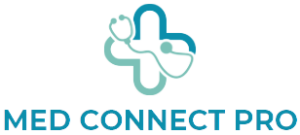Invisalign has emerged as a popular alternative to traditional braces, offering a discreet and effective way to straighten teeth. However, one of the most common questions prospective patients ask is, how much does Invisalign cost, The price of Invisalign treatment can vary widely based on several factors, including the complexity of your case, geographic location, and the specific dental provider you choose.
On average, the cost of Invisalign treatment ranges from $3,000 to $8,000. This price range is comparable to traditional braces, making Invisalign a competitive option for those seeking orthodontic treatment. However, several factors influence the overall cost, and understanding these can help you make an informed decision about your treatment options.
One of the primary factors affecting the cost of Invisalign is the complexity of your orthodontic issues. Cases that involve mild to moderate misalignment typically fall on the lower end of the price spectrum, while more complex cases that require significant adjustments may push costs higher. During your initial consultation, an orthodontist will evaluate your dental condition and provide a customized treatment plan that outlines the estimated cost based on your specific needs.
Another key factor influencing the cost of Invisalign is geographic location. Prices can vary significantly from one region to another, and even among providers within the same city. Urban areas with a higher cost of living often see higher treatment fees compared to rural locations. When considering your options, it’s essential to research multiple providers in your area to ensure you receive the best value for your investment.
The specific dental provider you choose also plays a crucial role in determining the cost of Invisalign. Orthodontists typically have specialized training in this area, and their expertise can influence pricing. While some general dentists offer Invisalign treatment, it’s advisable to choose a qualified orthodontist who has extensive experience with the system. Their expertise can contribute to better treatment outcomes, which may ultimately save you money on potential revisions or additional treatments.
Insurance coverage is another important consideration when evaluating the cost of Invisalign. Many dental insurance plans cover a portion of orthodontic treatment, including Invisalign, but coverage varies widely. It’s essential to check with your insurance provider to understand what is covered and what your out-of-pocket expenses may be. Additionally, some orthodontists offer financing options and payment plans to help make treatment more affordable. This flexibility can make it easier to manage the cost over time.
While the initial investment in Invisalign may seem significant, it’s essential to consider the long-term benefits of achieving a straighter smile. In addition to the aesthetic improvements, properly aligned teeth can lead to better oral health, reduced risk of cavities, and improved function. Many patients report increased confidence and self-esteem as they progress through their treatment, making the investment in Invisalign worthwhile.
It’s also important to remember that Invisalign aligners are removable, allowing for more flexibility in your daily routine. Patients can eat and drink without restrictions, which is often a concern with traditional braces. This convenience, combined with the comfort and aesthetic appeal of clear aligners, makes Invisalign an attractive option for many individuals.
In conclusion, the cost of Invisalign can vary based on several factors, including the complexity of your case, geographic location, and the specific provider you choose. While the investment may seem considerable, the long-term benefits of a straighter smile and improved oral health can make it a worthwhile consideration. To ensure you receive the best value for your investment, research multiple providers, understand your insurance options, and explore any financing plans available. By taking these steps, you can embark on your journey to a beautiful smile with confidence and clarity about the costs involved.
